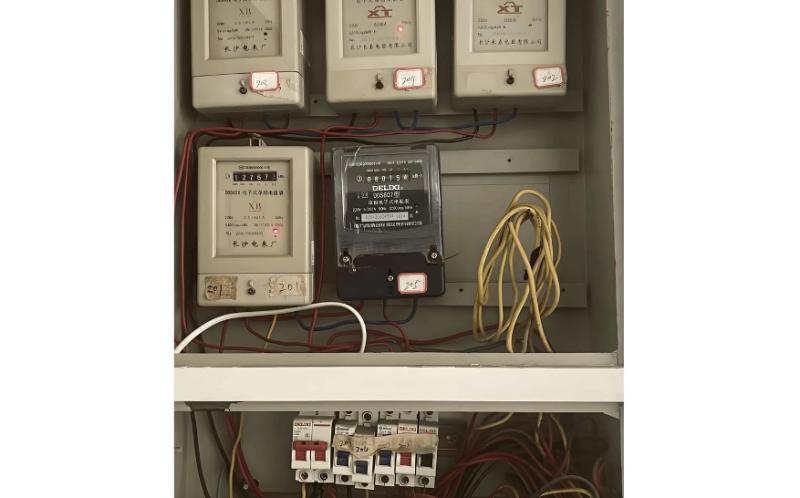- Product
- Suppliers
- Manufacturers
- Solutions
- Free tools
- Knowledges
- Experts
- Communities
Search
-
مفت اوزار
-
IEE Business برقی انجینئرنگ ڈیزائن اور پاور خریداری کے لیے مفت AI سے چلنے والے ٹولز پیش کرتا ہے: پیرامیٹرز درج کریں، کیلکولیٹ پر کلک کریں، اور ٹرانسفارمر، وائرنگ، موترز، پاور ایکوپمنٹ کی قیمتیں اور مزید کے فوری نتائج حاصل کریں — دنیا بھر کے انجینئرز کی طرف سے تصدیق شدہ۔
-
-
حمایت اور سپانسرشپ
-
IEE-Business کیمہ نویات اور قدر کا امتزاج ہونے والے پلیٹ فارم کو سپورٹ کرتا ہےنمونے کی تکنیکی معلوماتفنڈیں حاصل کرنے کے لئے شراکت دار بنیں اور تکنیکی معلومات شیئر کریںاعظم کاروباری حل پیشکشسبونسرز سے پیسہ کمانے کے لئے کاروباری حل اور تشکیل دیںبارز انفرادی ماہرینکارپورٹ کو اپنی صلاحیتوں کا مظاہرہ کریں مستقبل بنائیں
-
-
کمیونٹی
-
اپنی پیشہ ورانہ کمیونٹی قائم کریںاپنے کاروبار کو بڑھانے کے لیے صنعت کے ہم منصبوں، ممکنہ شراکت داروں اور فیصلہ سازوں کو تلاش کریں اور جڑیںاپنا ذاتی نیٹ ورک وسیع کریںصنعت کے ہم منصبوں، ممکنہ شراکت داروں اور فیصلہ سازوں کے ساتھ جڑ کر اپنی ترقی کو تیز کریں۔مزید اداروں کی دریافت کریںہدف کمپنیوں، شراکت داروں اور صنعت کے رہنماﺅں کی تلاش کریں تاکہ نئے کاروباری مواقع حاصل کیے جا سکیں۔Join Diverse Communitiesموضوعات پر مباحث، صنعتی تبادلے اور وسائل کی شراکت میں حصہ لیں تاکہ اپنے اثر و رسوخ کو بڑھائیں۔
-
-
ہم سے شراکت کریں
ریاضی شریک
-
-
IEE Business ساتھی پروگرام میں شرکت کریںکاروباری نشوں کو فعال کرنا —— ٹیکنیکل ٹولز سے لے کر عالمی کاروباری توسیع تک
-
-
-
اردو
-
- English
- Afrikaans
- العربية
- Azərbaycan dili
- български
- বাংলা
- Català
- Cebuano
- čeština
- Dansk
- Deutsch
- Ελληνικά
- Esperanto
- Español
- Eesti keel
- Euskara
- دری
- فارسی
- suomi
- Filipino
- français
- Gaeilge
- Galego
- Hausa
- עברית
- हिन्दी
- Hrvatski
- magyar nyelv
- հայերեն
- Bahasa Indonesia
- Íslenska
- Italiano
- 日本語
- ქართული
- Қазақ тілі
- ಕನ್ನಡ
- 한국어
- Kurdî
- Latina
- Latviešu valoda
- македонски јазик
- Bahasa Melayu
- Malti
- नेपाली
- Nederlands
- Norsk
- ਪੰਜਾਬੀ
- polski
- پښتو
- Português
- Русский язык
- සිංහල
- Slovenščina
- српски језик
- Svenska
- Kiswahili
- தமிழ்
- తెలుగు
- ไทย
- Tagalog
- Türkçe
- українська мова
- اردو
- Oʻzbek tili
- Tiếng Việt
-
-
اردو
-
- English
- Afrikaans
- العربية
- Azərbaycan dili
- български
- বাংলা
- Català
- Cebuano
- čeština
- Dansk
- Deutsch
- Ελληνικά
- Esperanto
- Español
- Eesti keel
- Euskara
- دری
- فارسی
- suomi
- Filipino
- français
- Gaeilge
- Galego
- Hausa
- עברית
- हिन्दी
- Hrvatski
- magyar nyelv
- հայերեն
- Bahasa Indonesia
- Íslenska
- Italiano
- 日本語
- ქართული
- Қазақ тілі
- ಕನ್ನಡ
- 한국어
- Kurdî
- Latina
- Latviešu valoda
- македонски јазик
- Bahasa Melayu
- Malti
- नेपाली
- Nederlands
- Norsk
- ਪੰਜਾਬੀ
- polski
- پښتو
- Português
- Русский язык
- සිංහල
- Slovenščina
- српски језик
- Svenska
- Kiswahili
- தமிழ்
- తెలుగు
- ไทย
- Tagalog
- Türkçe
- українська мова
- اردو
- Oʻzbek tili
- Tiếng Việt
-























